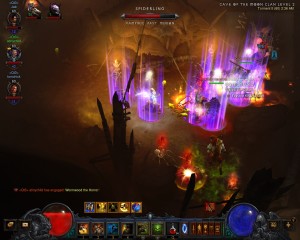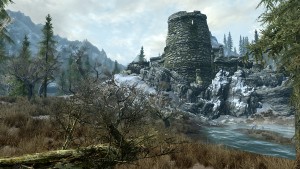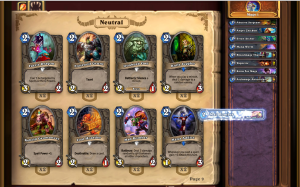The expression “power curve” is the focus for today’s post. An important term for fine tuning games built around RPG progression and something that anyone with an interest in game design needs to understand.
Tracking Power:
Unlike other terms we’ve talked about in the past, a power curve has a mostly agreed upon definition:
Power Curve: The rate or growth in regards to content in a video game
When referring to a power curve in any video game, there are two common areas that are discussed — The player and the enemies.
The player’s power curve is a representation of any and all forms of progression the game designer has implemented throughout the entire game. This can mean new skills, going up in level and earning new stats, new equipment etc. Obviously we can look at any RPG to see an example of a power curve at work — Someone who is level 10 is better than someone who is level 5. A common rule of thumb is that the player’s power curve should be rising over time and is one of the primary motivators of playing through a game like WoW or Diablo where you get to see how strong you become.
When I talked about the clicker genre, the use of the power curve was in full effect to keep people playing as they were able to do things quicker thanks to upgrades and clicking.
The enemy’s power curve is a lot easier to track as the game developer has complete control over their designs and can raise and lower them to adjust for the player. We can see examples of this kind of control in games like Oblivion or Diablo 3 which adjusted enemies based on the level of the player. But even in action games the use of a power curve can be seen as designers will adjust the challenges of encounters to make things more dangerous for the player the further they get into the game.

RPGs typically feature an escalating power curve designed to keep the allure of growing stronger going.
The enemy’s power curve needs to remain comparative to the player’s as to not make things too difficult or it could be used as a means of gating content for the player.
Now that we’ve talked about and defined power curves, let’s look closer at the forms of progression that will impact the player’s power curve.
Persistent Progression:
There are two popular forms of progression that a game designer can implement to impact the power curve of the player’s experience and we’ll start with escalating progression. Escalating or a consistent power curve means that the player’s power curve will be continually rising over the course of play through incremental improvements: Leveling up or new gear.
If we had to track the power curve on a graph, it would be continually going up based on power over time. As we talked about in the last section, RPGs are built around this kind of progression model as it provides an easy measurement of how strong the player is getting and makes balancing content easier.
Going back to Diablo 3, the designers controlled the power curve of the player through the equipment which was locked to the player’s level. This meant that gear was balanced stat wise based on whatever the player’s level was and gave them control over the player’s progression. Finding rare or legendary rated loot would throw the power curve’s balance out of alignment, however given the low probability of that happening meant that the player would never be out of the designer’s measurement for long.

The Elder Scrolls series have become focused on keeping the progression in check by altering enemy encounters as the player grows in power.
What makes this form of progression easy to balance is that because it is always escalating, the game designer has more leeway in terms of adding new content and progression without worrying about messing up the early balance.
In Diablo 3, the balance of the loot is measured between level 1-60 content and then 61-70 which represented the new expansion. Because of this, they could alter and mess with the gear stats of either set without having it impact the other that much.
Escalating progression also makes it a lot easier to show the player just how strong they have become — at level 5 you were doing 12 points of damage but now at level 30 you do 150. And the same can be said of the enemies as you go from fighting rats and basic enemies to giant monsters and raid bosses.
But there is one other form of progression to discuss and it can throw the power curve for a loop.
Preset Progression:
Preset progression is when the player’s power curve is based on selecting hard choices or upgrades created by the game developer. We can see examples of this with perk systems, building a deck in a CCG, talents in WoW and so on. Generally preset progression challenges the player to make hard choices about their play style and how their power curve will grow. With Diablo 3 for instance, the player could choose what skills and runes to make use of that defined their build.
The point is that instead of the player always rising in power, these choices are fewer but more meaningful and long lasting. In the Binding of Isaac for example, every item has been hard coded of their impact on the player’s experience and will be the same way every time. Because you are getting fewer choices, the power curve is a bit different for games with this kind of progression. Instead of a continually growing line, it’s more like having sudden peaks when you unlock a new upgrade.
Many games feature both forms of progression to give the player a rising sense of power while also having more polarizing forms to give a greater sense of meaning and personalization to the player. In the Borderlands series, all the weapons and gear that you can find are based on an escalating power curve while the skills that you can unlock from the skill trees are preset. While Diablo 3 had the already mentioned skills, runes and passives which players could mix and match at their leisure.

Preset Progression is about using predefined elements that will enhance your character in specific ways.
As you can see, preset progression gives the developers a lot more freedom in controlling the power curve and making the player’s experience different over time.
However it is also a lot harder to balance and fine tune because you’re not dealing with elements that grow but remain constant.
In Hearthstone for example, it doesn’t matter if someone has been playing the game for 8 minutes or 80 hours, everyone has the same deck limits and pool of cards to draw from. Likewise, my version of a card has the same value and utility as your version of the same card and nothing about our level or the amount of money spent will change that.
Because of having a set pool of content that impacts the power curve, every change by the developer will impact the game greatly as it’s not just one thing you’re altering, but how it compares to the rest of your choices. In Hearthstone, simply changing a card’s cost by one point can have massive impacts on the game’s Meta and we saw this with how Blizzard destroyed the Meta build of the “miracle rogue” by changing the cost of the auctioneer card from 5 to 6.
This also makes it very hard to introduce new content and progression as again, you’re not just balancing new content in relation to the new content but to all the other preset forms of progression in your game. Some designers will simply invalidate or change older content to keep up with the times such as with Magic the Gathering and how older cards that couldn’t be balanced with the new content were removed from competitive play.
Unlike a traditional game or one with escalating progression, there is no such thing as a set foundation for the developer to fall back to as again; one change will affect everything in your game. This is why you need to take a very careful hand when it comes to balancing your content and why developers take a longer time adding and altering content in set progression games.
Another issue is that having a set list of upgrades makes it a lot easier for players to figure out the best upgrades or the most optimal ones. This can lead to the player being able to break the game and can be disastrous for competitive games.
What’s Correct?
Both forms of progression have drastic impacts on your game’s power curve and in response, the player’s experience. Like with all questions of game design, it’s important to have a solid foundation of what you want for your game.

Preset Progression is a lot harder to balance as every element has to be aligned with each other or the game will become imbalanced.
The measurement of a great game isn’t whether or not the game has escalating, set or a mix of the two, but how well the designer is able to integrate their progression into the experience and power curve.
The player should always feel like they are moving forward, hence the rise in power. But poor progression will make the player feel like they are either staying stagnant or going backwards.
This is one of those topics where we can continue to examine in other games and is one that we’re not done talking about.


